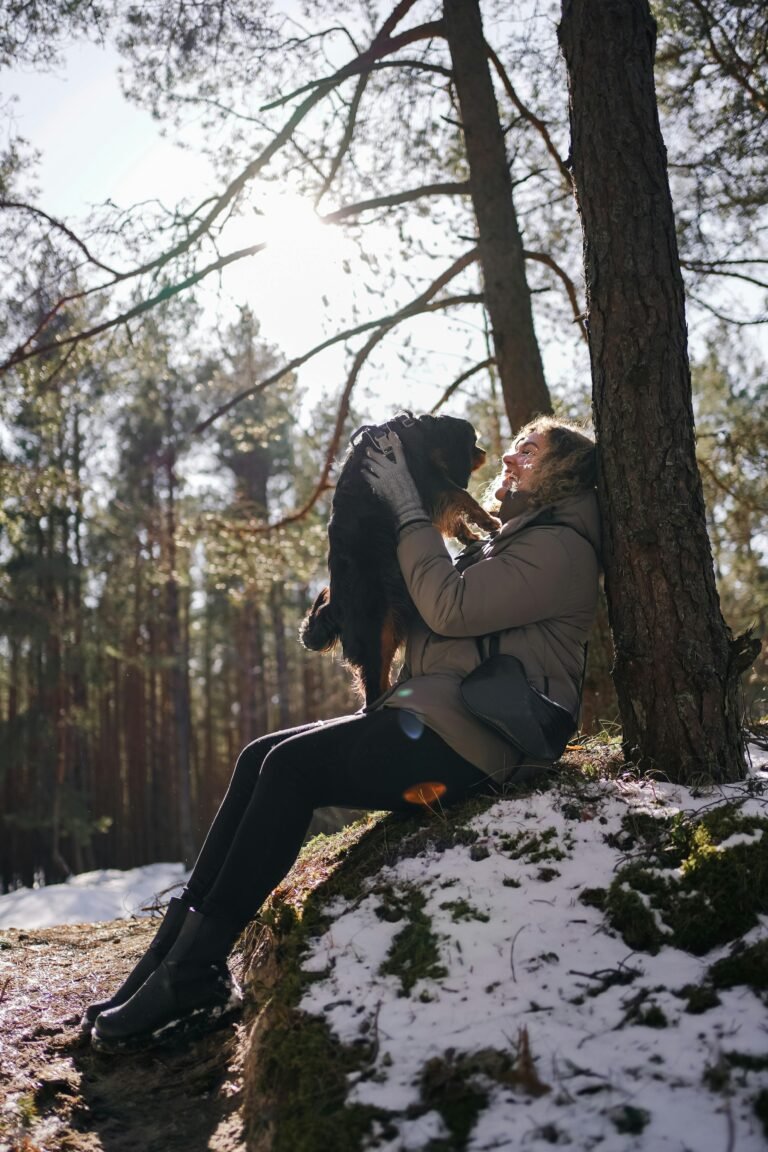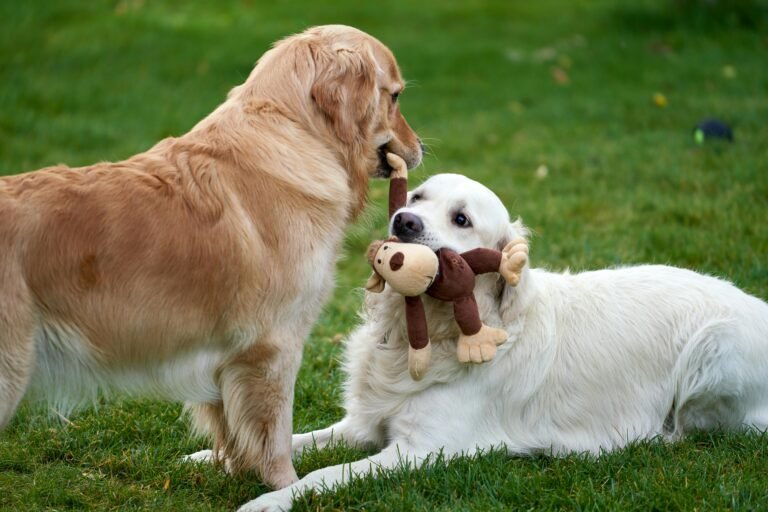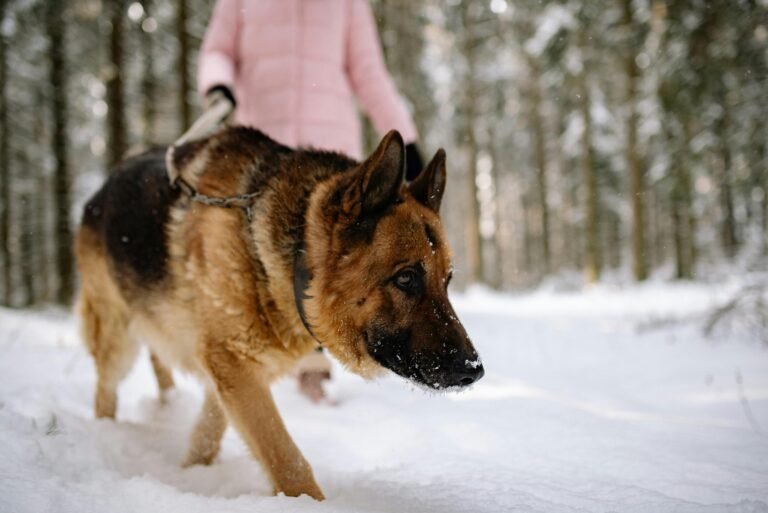Introduction
Ever wondered if your dog really remembers you after a long trip? Or how they seem to know when it’s time for dinner or their daily walk? Dogs may not keep a written diary or reminisce about “the good old days,” but they absolutely have memory — just not quite the way humans do. Understanding how dogs remember can deepen your bond and help you train, comfort, and connect with them in more meaningful ways.
1. The Two Types of Memory in Dogs
Like humans, dogs have different kinds of memory that work together — but in simpler, more instinct-driven ways.
- Short-Term Memory: Helps your dog recall something that just happened — like where they left their toy or that you dropped a piece of chicken on the floor. It lasts only about a minute or two.
- Long-Term Memory: Built through repetition and emotional association. This is how your dog remembers commands, routines, and people — even after long absences.
Pro Tip: Positive emotions strengthen memory in dogs. If they associate you with love, play, or safety, they’ll never forget you — even after months or years apart.
2. How Dogs Remember People
Dogs don’t just recognize faces; they remember scents and emotional cues far more deeply than visual details. A dog’s sense of smell is 10,000 times more powerful than a human’s, and it’s directly linked to the part of their brain that processes memory and emotion.
- They remember your unique scent — even after years apart.
- They associate your tone, touch, and energy with emotional memories.
- They can differentiate between familiar and unfamiliar people instantly through smell and voice recognition.
Scientific Insight: A study at Emory University found that dogs show increased brain activity in the caudate nucleus — the reward center — when smelling familiar humans, proving that recognition is tied to positive emotion.
3. Episodic vs. Associative Memory
Humans remember experiences through episodic memory — a mental timeline of events. Dogs, on the other hand, rely on associative memory. This means they link actions, sounds, or emotions to outcomes rather than recalling specific moments in time.
- They don’t think, “I remember that one time you took me to the park.”
- They think, “Leash → car ride → park → fun!”
This system works beautifully for training — when positive reinforcement creates strong, lasting associations. However, it also explains why negative experiences (like fear or punishment) can leave lasting impressions, too.
4. How Long Can a Dog Remember?
Short-term memory in dogs fades fast — often within two minutes — but long-term memory can last for years, even a lifetime. Many dogs remember their owners after years of separation, or recognize old friends from the neighborhood after moving away.
Example: Rescue dogs often remember past trauma, environments, or handlers, even after long rehabilitation periods. Memory in dogs is selective but powerful when tied to strong emotional events.
Pro Tip: The more consistent and emotional your interactions, the stronger your dog’s memory of them becomes. Dogs “rehearse” positive moments through routine and repetition.
5. Do Dogs Understand Time?
Dogs don’t read clocks, but they sense time passing through patterns — smell, light changes, and human behavior. Research suggests dogs can measure intervals, not in minutes, but in rhythms and cues. For example:
- They learn that sunlight or certain sounds (like a garage door) signal your return.
- They notice when routines shift — dinner late, walks early, bedtime skipped.
- Their internal “circadian rhythm” (body clock) helps them anticipate meals and activity times.
Study Note: A 2011 study by Therese Rehn showed that dogs displayed greater excitement when owners returned after two hours compared to 30 minutes — suggesting they do perceive the passage of time, at least emotionally.
6. Emotional Memory: The Strongest Kind
Dogs might not remember every detail, but they never forget how something made them feel. Emotional memory is central to canine behavior:
- Happy experiences build trust and excitement — like hearing your car pull up.
- Negative experiences create avoidance — fear of a loud vacuum or a certain tone of voice.
- Neutral experiences fade — if it’s not emotionally relevant, it’s forgotten quickly.
Pro Tip: Always end training and play sessions on a positive note. The last emotional impression lingers most strongly in your dog’s memory.
7. Can Dogs Remember Other Dogs?
Yes! Dogs form social memories, recognizing other dogs through scent, behavior, and vocal cues. Longtime playmates or family dogs often reconnect instantly even after long separation — thanks to scent-based recognition stored in emotional memory centers.
Example: Shelter reunions have shown that bonded dogs remember each other years later, often showing immediate affection and excitement upon reuniting.
8. Memory and Training: How to Use It to Your Advantage
- ✅ Consistency is key: Repetition builds lasting associations in long-term memory.
- ✅ Keep sessions short: Dogs learn best in bursts of 5–10 minutes.
- ✅ Reward-based reinforcement: Positive emotions strengthen recall and reduce anxiety.
- ✅ Use clear cues: Dogs remember tone and rhythm more than exact words.
Pro Tip: Dogs often remember the *feeling* of a command more than the word itself — stay calm and positive to build trust and recall powerfully.
9. When Memory Fades: Senior Dog Cognition
As dogs age, they can develop Canine Cognitive Dysfunction (CCD), similar to dementia in humans. Signs include confusion, changes in sleep, forgetting familiar people, or wandering aimlessly. Regular stimulation — through play, scent games, and affection — helps slow decline and maintain emotional connection.
Tip for Older Dogs: Routine is everything. Familiar smells, consistent meal times, and gentle reminders (like guiding them to their bed) keep senior pups comfortable and secure.
10. Strengthening Your Dog’s Memory Every Day
- 🧠 Practice recall games (“Come!” and hide-and-seek strengthen recognition).
- 🦴 Rotate toys — novelty keeps the brain active and forms stronger associations.
- 👃 Encourage scent work — it taps into the most powerful part of their memory system.
- 🤝 Keep greetings emotional — your joy reinforces recognition and attachment.
Conclusion
Your dog’s memory may not work like yours, but it’s no less powerful. They may not dwell on the past or anticipate the far future, but they live vividly in every moment — remembering people, places, and feelings that matter. The way you interact, train, and love them today shapes the memories they carry for life. So keep every walk, cuddle, and “good boy” filled with joy — because to your dog, those moments become forever.






